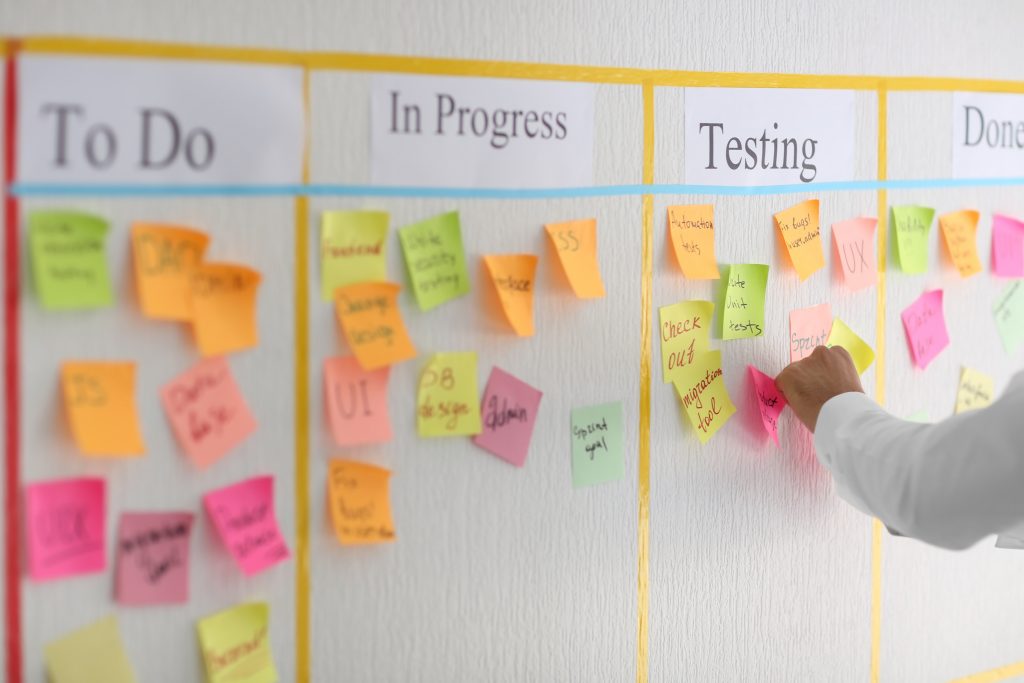The Three Pillars of Successful Project Management in Physical Security
Project managers have the challenging task of bringing a diverse set of people and tasks together towards a successful outcome. Both cooperation and collaboration are necessary for the coordination of the moving pieces involved in the project’s success. The project manager’s key to success is to adhere to best practices, maintain visibility in the project, have strong communication with the team and client, foresee the issues that are likely to arise, and be adept in pulling the right resources to resolve them.

There are three important pillars of project management that should be considered before starting a project.
Team Building
End users are often most interested in where they stand versus their peers as they enter the decision-making process. Typically, their expectations for benchmarking fall into two buckets: presentation and information.
- Build a dedicated team – proactively manage the team by understanding their roles as well as their personalities and performance expectations.
- Greater integration – reinforce more synergy between teams, add strength, and improve productivity.
- Point of Contact (POC) for clients – maintain positive relationships with potential and existing clients while eliminating the risks of miscommunication.
- Client politics – learn and utilize client politics and the client-integrator partner politics first to be successful.
- Unified alliance with integrator – have an in-depth understanding of objectives and points of view.
- Team alignment – the team should constantly communicate and deliver, and never miss any of the targets.
- Sustaining high performance – never be a bottleneck to project progress and deliverable timelines at any stage during the project. Communication, clarity, and trust are a project’s highest qualities.
- Point of Contact (POC) for stakeholders – be the main point of contact for all stakeholders; be trusted by each partner from each project angle.
Effective Communication
- Strategic communication methods – develop strong communication methods that align with the personalities and communication styles of clients i.e., calls, texts, one-off calls, meeting series, email).
- Integrated Marketing Communication – develop and maintain a working relationship with both the integrator and the client so meetings and relationships are well-managed respectively, along with the broader audience calls.
- Customer Relationship Management (CRM) – before returning to the client with an update or recommendation, ensure that the messaging lines up with the partner or integrator.
- Avoid Scope Creep with efficient communication – manage scope conversations from the start and establish a governance for change management. Scope creep can lead to a more complex result, but it is always fixable. A proper change management process can mitigate project risks, such as cost and schedule overruns.
Deliverables
- Planning successful outcomes – before the project kicks off or moves forward, ensure that the discovery period (i.e., use case or priority deliverables) is discussed openly and understood by all stakeholders. Do not set a realistic schedule to communicate out until you have a firm grasp of each project deliverable with an achievable timeline.
- Develop measurable deliverables – Build and align to measurable project deliverables including time and a tangible link, such as a sprint with use cases.
- Communicate risk to stakeholders – keep up with the updates ahead of time to avoid any risks or delays. All stakeholders should be aware of and prepared for delays by the time a formal discussion takes place.
- Risk management – before there is an actual at-risk situation, identify project risks and design a risk mitigation strategy.
Plan ahead – make sure to get ahead of all tasks through task tracking files and highlight dependencies involved in the project. - Acknowledge success – Celebrate project wins, appreciate progress, build on positive momentum, and give recognition to the best performing members of the team

Final Thoughts
There are many different components to success in project management. The key is knowing what they are and how best to use them so that your projects get delivered on time, within budget, and with the results expected by stakeholders. Good project management is not just about making sure you complete your deliverables, it’s also about building a team that communicates effectively and cares for the needs of clients and one another. If these three pillars are properly managed, the outcome is usually a satisfactory and successful result for all participants in the process.
About Atriade
Atriade is a security consulting firm. We provide security system design services for access control, perimeter protection, video and visitor management, and other physical security technologies. We also provide security master planning, program development, risk assessments, professional services, and project management.
Our client portfolio includes Fortune 50 companies, Ivy League universities, and leading technology firms in Silicon Valley.
Visit us online at Atriade.com
Connect with us on LinkedIn
Subscribe to our LinkedIn Newsletter: Take A Risk
- Categories:
- Blog,
- Project Management
